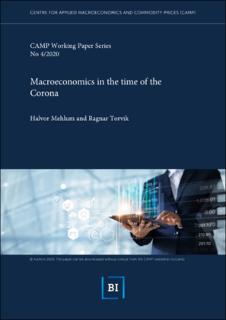| dc.description.abstract | For a developed market economies, the corona crisis is a new type of crisis, but this crisis has parallels to economies at other times, and to crises at other places. We discuss some mechanisms from the traditional macro literature, and from the literature on macroeconomics for developing countries, which contains economic mechanisms that overnight have also become more relevant to developed market economies. Phenomena such as bottlenecks, rationing, forced savings, production constrained by access to inputs, liquidity constraints, sector heterogeneity, and costs running despite production being shut down, are all permanent phenomena in developing countries. During the corona crisis, however, they have also emerged as key mechanisms in developed market economies. We discuss some of these well developed, but partially forgotten mechanisms, by extending simple textbook descriptions, and we provide some examples of how the effects of fiscal and monetary policy are modified in a time of crisis. | en_US |
